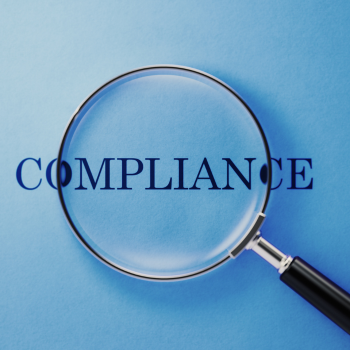Compliance: agreement, monitoring and success
 The word ‘compliance’ means the act or process of complying to a requirement. Being in compliance involves understanding, executing and performing what has already been agreed by the parties involved: the jurisdiction, company, stakeholders and employees. This relationship promotes a dynamic environment where constant evaluation, innovation, and creativity occur.
The word ‘compliance’ means the act or process of complying to a requirement. Being in compliance involves understanding, executing and performing what has already been agreed by the parties involved: the jurisdiction, company, stakeholders and employees. This relationship promotes a dynamic environment where constant evaluation, innovation, and creativity occur.
What exactly is compliance?
Compliance consists of a series of procedures that are organized or coordinated within the overall framework of business management in order to improve how business operations are conducted. These ethical principles underpin new business strategies, management practices, and technologies that aim to increase transparency and improve the relationships between companies, employees, clients, and investors.
Rules and regulations governing the financial market are steadily evolving and becoming all the more prominent and active. Since the 2008 financial system crisis, there has been a growing demand for transparency and clear rules regulating the relationship between institutions and investors in order to prevent any risk of fraud or illicit acts in decision-making processes. The emergence of compliance practices is driven by these demands.
Being in compliance means adapting a sector’s production process to corporate governance rules that foster permanent engagement between the parties involved in a business, reducing friction and shortening contact between segments. Compliance is intended to make the following of legislation part of a company's corporate culture.
The elements of compliance
Centered on aspects of prevention, monitoring and response, compliance works to enable closer and more effective communication between the parties involved in a financial transaction, which is supported by corrective actions.
As such, compliance seeks to detect and promptly intervene in practices that lead to non-compliance with ethical and legal standards of conduct that may damage the company's image and reputation. In this sense, compliance helps to establish values that improve interactions and operations within the financial market, making it more effective and valuable.
And in practice?
It acts as a set of administration and management procedures that promote a culture aimed at encouraging ethical attitudes and compliance with the law for all departments within a corporation. These elements of prevention, monitoring and response come together to integrate processes and people. This integration fosters continuous improvement, which supports the development of a company culture:
-
Prevention (Clear policies, training and support programs):
-
Clear decision-making processes and guidelines for how people interact;
-
Constant communication;
-
Centralization of information;
-
Ongoing training.
-
Detection (Comprehensive control system):
-
Expanding the role of legal experts in the monitoring and evaluation of processes;
-
Developing a routine involving ongoing internal audits;
-
Continuous analysis of how well compliance is working;
-
Constant updating of compliance control mechanisms in response to everyday challenges.
-
Response (Clear consequences and conflict responses):
-
Links between conduct and the consequences when actions do not align with rules that have been previously established;
-
Dynamic support for complaints reporting;
-
Effectiveness of the monitoring process is demonstrated through problem-solving actions.
These elements need to always be connected. Corporate relationships determined by clearly defined and auditable procedures are more easily traceable, promoting the efficiency and effectiveness of the response system. When a company's monitoring and response system works well, it not only validates and supports the existing culture but also helps to reinforce and consolidate that culture within the company.
Golden rules of compliance
Two golden rules are required for the relationships between foundational elements to work effectively: clear and well-defined procedures between parties and the removal of conflicts of interest in the decision-making process.
This helps compliance benefit a company's division of responsibilities and priorities. This relationship promotes a dynamic environment where constant evaluation, innovation, and creativity occur.
Advantages of compliance for companies
Having compliance elements work well together favors:
-
A reduction in expenses from legal liabilities;
-
Minimizing the risk of administrative sanctions, such as penalties and fines;
-
Planning for and reducing the tax burden of the business;
-
Increased legal certainty in business relations with customers, partners, suppliers and stakeholders;
-
Heightened credibility and strong relationships with supervisory authorities;
-
Protection and improvement of the company's institutional image in the eyes of the market, investors and shareholders; and,
-
Increased business competitiveness and profitability.
Lastly, compliance is about enhancing the application of certain tools and methods in administration and management to better achieve business objectives. It is focused on ensuring adherence to internal and external administrative and legal regulations of the various segments involved in a business. It makes it possible to achieve permanent engagement of all these areas, which fosters a culture of corporate governance that works to optimize processes, reduce errors and make results more effective, in line with the objectives and values of the companies involved in a given business negotiation.
